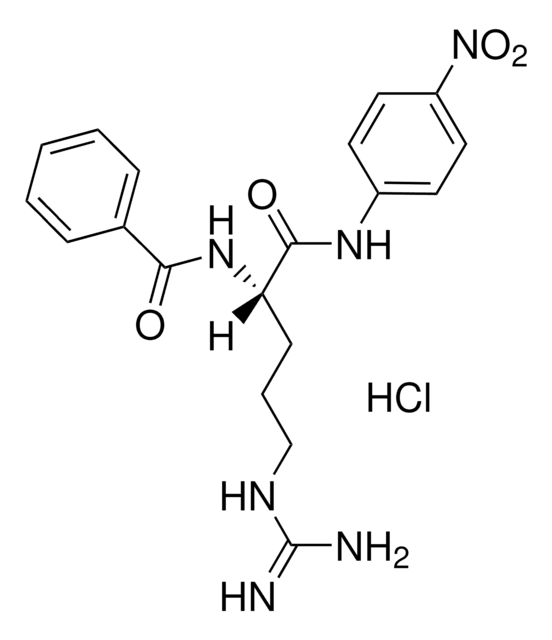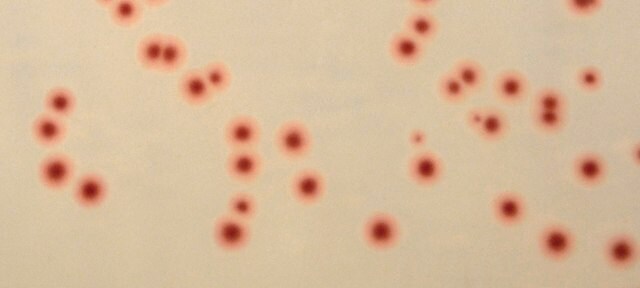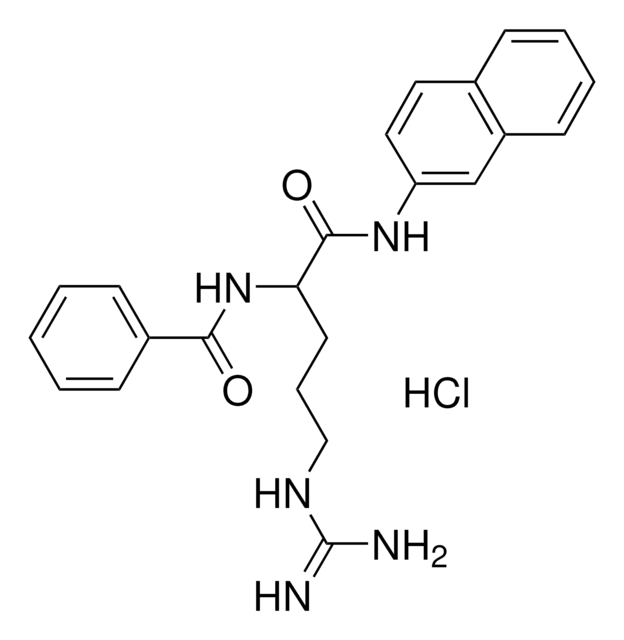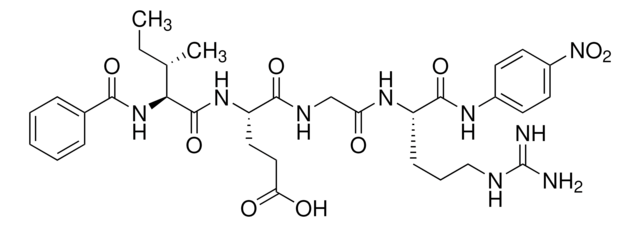B4875
Nα-Benzoyl-DL-arginine 4-nitroanilide hydrochloride
trypsin substrate, chromogenic, elastase substrate, ≥98%, powder
Synonim(y):
Nα-Benzoyl-DL-arginine p-nitroanilide hydrochloride, BANI, BAPNA
About This Item
Polecane produkty
product name
Nα-Benzoyl-DL-arginine 4-nitroanilide hydrochloride, ≥98%
Próba
≥98%
Postać
powder
kolor
, white to light yellow to light brown
rozpuszczalność
DMSO: 50 mg/mL (colorless to dark green-yellow to dark brown-yellow)
temp. przechowywania
−20°C
ciąg SMILES
Cl[H].NC(=N)NCCCC(NC(=O)c1ccccc1)C(=O)Nc2ccc(cc2)[N+]([O-])=O
InChI
1S/C19H22N6O4.ClH/c20-19(21)22-12-4-7-16(24-17(26)13-5-2-1-3-6-13)18(27)23-14-8-10-15(11-9-14)25(28)29;/h1-3,5-6,8-11,16H,4,7,12H2,(H,23,27)(H,24,26)(H4,20,21,22);1H
Klucz InChI
DEOKFPFLXFNAON-UHFFFAOYSA-N
Szukasz podobnych produktów? Odwiedź Przewodnik dotyczący porównywania produktów
Opis ogólny
Zastosowanie
Opakowanie
Substraty
Kod klasy składowania
11 - Combustible Solids
Klasa zagrożenia wodnego (WGK)
WGK 3
Temperatura zapłonu (°F)
Not applicable
Temperatura zapłonu (°C)
Not applicable
Środki ochrony indywidualnej
Eyeshields, Gloves, type N95 (US)
Certyfikaty analizy (CoA)
Poszukaj Certyfikaty analizy (CoA), wpisując numer partii/serii produktów. Numery serii i partii można znaleźć na etykiecie produktu po słowach „seria” lub „partia”.
Masz już ten produkt?
Dokumenty związane z niedawno zakupionymi produktami zostały zamieszczone w Bibliotece dokumentów.
Klienci oglądali również te produkty
Protokoły
Objective: To standardize a procedure for the enzymatic assay of Aprotinin.
Nasz zespół naukowców ma doświadczenie we wszystkich obszarach badań, w tym w naukach przyrodniczych, materiałoznawstwie, syntezie chemicznej, chromatografii, analityce i wielu innych dziedzinach.
Skontaktuj się z zespołem ds. pomocy technicznej












